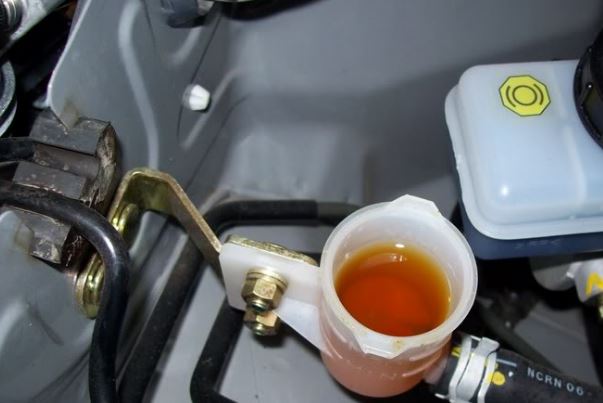Welcome to the world of automotive maintenance and care! If you’re a car enthusiast or simply a responsible vehicle owner, you’ve probably wondered about various aspects of keeping your automobile in top-notch condition. One critical aspect that demands attention is the clutch system. In this introduction, we’ll explore a common query that often arises: Can you top up clutch fluid without bleeding? We’ll delve into the intricacies of clutch fluid, its importance in the smooth functioning of the clutch system, and whether adding fluid without bleeding is a feasible solution. So, fasten your seatbelts as we journey through the realm of clutch maintenance and unravel the mysteries of proper care for your vehicle’s performance and longevity.
Consider When Adding Clutch Fluid Without Bleeding
consider when adding clutch fluid without bleedingTopping up clutch fluid without bleeding is indeed a possibility, but it’s important to approach this task with caution and an understanding of its potential implications. Clutch fluid, also known as hydraulic fluid, is essential for transmitting the force from the clutch pedal to engage and disengage the clutch. Over time, the fluid level in the clutch master cylinder reservoir might decrease due to small leaks or normal wear and tear. Topping up the fluid can help maintain proper clutch operation.
However, there are a few key points to consider when adding clutch fluid without bleeding:
Fluid Compatibility: Always use the recommended type of clutch fluid specified in your vehicle’s owner manual. Mixing different types of fluids can lead to issues in the hydraulic system.
Clean Environment: Before opening the reservoir cap, ensure a clean and dust-free environment to prevent contaminants from entering the system.
Fluid Level: Verify the clutch master cylinder reservoir’s fluid level. If it’s below the recommended level, adding fluid can help restore proper function.
Air Introduction: When topping up the fluid, be careful not to introduce air bubbles into the system. Air in the hydraulic system can lead to reduced clutch performance.
Bleeding Consideration: While it’s possible to top up clutch fluid without bleeding, bleeding the system is recommended if air has entered the system or if you’ve recently replaced any components. Bleeding removes air pockets that could compromise clutch operation.
Professional Help: If you’re unsure about the process or if you suspect larger issues with your clutch system, it’s wise to consult a professional mechanic. They can provide expert advice and ensure the system is properly maintained.
Remember that while topping up clutch fluid can be a simple maintenance task, understanding the nuances of your vehicle’s hydraulic system is crucial. Regular maintenance and adhering to manufacturer recommendations for fluid type and bleeding procedures will help ensure your clutch system operates smoothly and efficiently.
Top up Clutch Fluid Without Bleeding

Topping up clutch fluid without bleeding can be done following these steps:
Materials Needed:
Recommended clutch fluid (specified in your vehicle’s owner manual)
Clean rag or paper towels
Funnel (if needed)
Step-by-Step Guide:
Safety First: Ensure the vehicle is parked on a level surface and the engine is turned off. This prevents any accidental movement and keeps you safe while working.
Locate the Clutch Master Cylinder Reservoir: Open your vehicle’s hood and locate the clutch master cylinder reservoir. It’s usually located near the brake master cylinder and is marked with a cap that indicates it’s for clutch fluid.
Check Fluid Level: Examine the fluid level through the transparent portion of the reservoir. There should be a minimum and maximum level marked. If the fluid level is closer to the minimum level or below it, you’ll need to top up.
Clean the Cap Area: Before opening the reservoir cap, clean the area around it with a rag or paper towels. This prevents any dirt or debris from entering the system.
Open the Cap: Unscrew the reservoir cap carefully. Some caps might have a dipstick attached to them to measure the fluid level more accurately.
Add Fluid: Slowly pour the recommended clutch fluid into the reservoir. If you’re using a funnel, make sure it’s clean and dry to prevent any contamination.
Observe the Level: As you add fluid, observe the level rising. Do not overfill the reservoir; aim to bring the fluid level closer to the maximum mark. Overfilling can lead to issues when the fluid expands with temperature changes.
Close the Cap: Once you’ve reached the desired fluid level, securely close the reservoir cap. Make sure it’s tightened properly to prevent any leaks.
Check for Leaks: After topping up the fluid, visually inspect the area around the reservoir for any signs of leaks. If you notice any leaks, it’s important to address them promptly.
Test Clutch Pedal: Before starting the vehicle, press and release the clutch pedal a few times to help distribute the new fluid. This also helps check if the clutch pedal feels normal and engages smoothly.
Final Check: Once you’re satisfied with the fluid level and clutch pedal feel, close the vehicle’s hood.
Remember, while topping up clutch fluid without bleeding is possible, bleeding the system might be necessary if you’ve introduced air into the hydraulic lines or if you’ve recently replaced any clutch components. If you’re uncertain about any aspect of this process, it’s always a good idea to consult your vehicle’s owner manual or seek assistance from a professional mechanic.
FAQs About Can You Top Up Clutch Fluid Without Bleeding
Why does clutch fluid need topping up?
Clutch fluid can decrease over time due to small leaks, wear and tear, or evaporation. Topping up ensures the proper operation of the clutch system.
What type of clutch fluid should I use?
Always use the clutch fluid recommended in your vehicle’s owner manual. Using the wrong type can lead to performance issues or damage to the hydraulic system.
Can I mix different types of clutch fluid?
It’s not recommended to mix different types of clutch fluid, as this can result in decreased performance or damage to the system. Stick to the specified type.
Do I need any special tools for topping up clutch fluid?
You generally don’t need special tools. A funnel, recommended clutch fluid, and a clean rag or paper towels are sufficient.
Can I use brake fluid as clutch fluid or vice versa?
No, brake fluid and clutch fluid have different compositions. They should not be interchanged, as each system has specific requirements.
How do I know if I’ve overfilled the clutch fluid reservoir?
Overfilling the reservoir can lead to issues when the fluid expands with temperature changes. Aim to keep the fluid level between the minimum and maximum marks.
What should I do if I introduce air into the system?
If you suspect air in the system, bleeding might be necessary. Bleeding removes air pockets that can affect clutch performance.
Is topping up clutch fluid a substitute for bleeding?
Topping up and bleeding serve different purposes. Topping up maintains fluid levels, while bleeding removes air and ensures proper hydraulic function.
Can I drive after topping up clutch fluid?
Yes, you can drive after topping up clutch fluid, but test the clutch pedal’s feel and engagement before driving to ensure everything is functioning properly.
Why is it important to clean around the reservoir cap before opening it?
Cleaning prevents dirt and debris from falling into the reservoir, which could contaminate the clutch fluid and affect its performance.
Can I add clutch fluid while the engine is running?
It’s generally recommended to add fluid with the engine off to prevent any accidental movement. However, refer to your vehicle’s owner manual for specific instructions.
Final Thought
In the end, the process of topping up clutch fluid without bleeding is a straightforward task that can help maintain the optimal performance of your vehicle’s clutch system. By ensuring that the fluid reservoir is properly filled to the recommended level, you can prevent potential issues such as clutch slippage, engagement problems, and unnecessary wear on clutch components.
However, it’s essential to note that while topping up clutch fluid without bleeding is possible, periodic bleeding of the clutch system remains crucial for the long-term health and efficiency of the system. Bleeding the clutch system removes air bubbles that may accumulate over time and could affect its functionality. Regular maintenance and following manufacturer guidelines for both topping up and bleeding clutch fluid will contribute to a smoother driving experience and extend the overall lifespan of your vehicle’s clutch system.
Related Topics:

